The Missing Women of Afghanistan
On Sept. 29 Ashraf Ghani was sworn in as president of Afghanistan. What he had to say in his inaugural speech about his wife, Rula Ghani, sent his nation's progressive women over the moon. (At right, an Afghan.)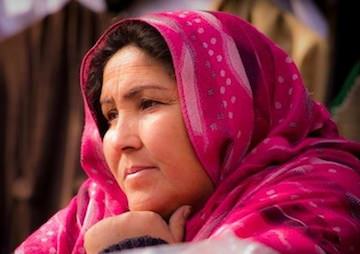 An Afghan woman. Photo by DVIDSHUB (CC BY 2.0)
An Afghan woman. Photo by DVIDSHUB (CC BY 2.0)
By Ann Jones, TomDispatchThis piece first appeared at TomDispatch. Read Tom Engelhardt’s introduction here.
On September 29th, power in Afghanistan changed hands for the first time in 13 years. At the Arg, the presidential palace in Kabul, Ashraf Ghani was sworn in as president, while the outgoing Hamid Karzai watched calmly from a front-row seat. Washington, congratulating itself on this “peaceful transition,” quickly collected the new president’s autograph on a bilateral security agreement that assures the presence of American forces in Afghanistan for at least another decade. The big news of the day: the U.S. got what it wanted. (Precisely why Americans should rejoice that our soldiers will stay in Afghanistan for another 10 years is never explained.)
The big news of the day for Afghans was quite different — not the long expected continuation of the American occupation but what the new president had to say in his inaugural speech about his wife, Rula Ghani. Gazing at her as she sat in the audience, he called her by name, praised her work with refugees, and announced that she would continue that work during his presidency.
Those brief comments sent progressive Afghan women over the moon. They had waited 13 years to hear such words — words that might have changed the course of the American occupation and the future of Afghanistan had they been spoken in 2001 by Hamid Karzai.
No, they’re not magic. They simply reflect the values of a substantial minority of Afghans and probably the majority of Afghans in exile in the West. They also reflect an idea the U.S. regularly praises itself for holding, but generally acts against — the very one George W. Bush cited as part of his justification for invading Afghanistan in 2001.
The popular sell for that invasion, you will recall, was an idea for which American men had never before exhibited much enthusiasm: women’s liberation. For years, human rights organizations the world over had called attention to the plight of Afghan women, confined to their homes by the Taliban government, deprived of education and medical care, whipped in the streets by self-appointed committees for “the Promotion of Public Virtue and the Prevention of Vice,” and on occasion executed in Kabul’s Ghazi stadium. Horrific as that was, few could have imagined an American president, a Republican at that, waving a feminist flag to cover the invasion of a country guilty mainly of hosting a scheming guest.
While George W. Bush bragged about liberating Afghan women, his administration followed quite a different playbook on the ground. In December 2001, at the Bonn Conference called to establish an interim Afghan governing body, his team saw to it that the country’s new leader would be the apparently malleable Hamid Karzai, a conservative Pashtun who, like any Talib, kept his wife, Dr. Zinat Karzai, confined at home. Before they married in 1999, she had been a practicing gynecologist with skills desperately needed to improve the country’s abysmal maternal mortality rate, but she instead became the most prominent Afghan woman the Bush liberation failed to reach.
This disconnect between Washington’s much-advertised support for women’s rights and its actual disdain for women was not lost upon canny Afghans. From early on, they recognized that the Americans were hypocrites at heart.
Washington revealed itself in other ways as well. Afghan warlords had ravaged the country during the civil war of the early 1990s that preceded the Taliban takeover, committing mass atrocities best defined as crimes against humanity. In 2002, the year after the American invasion and overthrow of the Taliban, the Afghan Independent Human Rights Commission established under the auspices of the U.N. surveyed citizens nationwide and found that 76% of them wanted those warlords tried as war criminals, while 90% wanted them barred from public office. As it happened, some of those men had been among Washington’s favorite, highly paid Islamist jihadis during its proxy war against the Soviet Union of the 1980s. As a result, the Bush administration looked the other way when Karzai welcomed those “experienced” men into his cabinet, the parliament, and the “new” judiciary. Impunity was the operative word. The message couldn’t have been clearer: with the right connections, a man could get away with anything — from industrial-scale atrocities to the routine subjugation of women.
There is little in the twisted nature of American-Afghan relations in the past 13 years that can’t be traced to these revelations that the United States does not practice what it preaches, that equality and justice were little more than slogans — and so, it turned out, was democracy.
Taking Sides
The American habit of thinking only in the short term has also shaped long-term results in Afghanistan. Military and political leaders in Washington have had a way of focusing only on the most immediate events, the ones that invariably raised fears and seemed to demand (or provided an excuse for) instantaneous action. The long, winding, shadowy paths of history and culture remained unexplored. So it was that the Bush administration targeted the Taliban as the enemy, drove them from power, installed “democracy” by fiat, and incidentally told women to take off their burqas. Mission accomplished!
Unlike the Americans and their coalition partners, however, the Taliban were not foreign interlopers but Afghans. Nor were they an isolated group, but the far right wing of Afghan Islamist conservatism. As such, they simply represented then, and continue to represent in extreme form today, the traditional conservative ranks of significant parts of the population who have resisted change and modernization for as long as anyone can remember.
Yet theirs is not the only Afghan tradition. Progressive rulers and educated urban citizens have long sought to usher the country into the modern world. Nearly a century ago, King Amanullah founded the first high school for girls and the first family court to adjudicate women’s complaints about their husbands; he proclaimed the equality of men and women, and banned polygamy; he cast away the burqa, and banished ultra-conservative Islamist mullahs as “bad and evil persons” who spread propaganda foreign to the moderate Sufi ideals of the country. Since then, other rulers, both kings and commissars, have championed education, women’s emancipation, religious tolerance, and conceptions of human rights usually associated with the West. Whatever its limitations in the Afghan context, such progressive thinking is also “traditional.”
The historic contest between the two traditions came to a head in the 1980s during the Soviet occupation of the country. Then it was the Russians who supported women’s human rights and girls’ education, while Washington funded a set of particularly extreme Islamist groups in exile in Pakistan. Only a few years earlier, in the mid-1970s, Afghan president Mohammad Daud Khan, backed by Afghan communists, had driven radical Islamist leaders out of the country, much as King Amanullah had done before. It was the CIA, in league with the intelligence services of Pakistan and Saudi Arabia, that armed them and brought them back as President Ronald Reagan’s celebrated “freedom fighters,” the mujahidin.
Twenty years later, it would be the Americans, spearheaded again by the CIA, who returned to drive them out once more. History can be a snarl, especially when a major power can’t think ahead.
Whether by ignorance or intention, in 2001-2002, its moment of triumph in Afghanistan, the U.S. tried to have it both ways. With one hand it waved the progressive banner of women’s rights, while with the other it crafted a highly centralized and powerful presidential government, which it promptly handed over to a conservative man, who scarcely gave a thought to women. Given sole power for 13 years to appoint government ministers, provincial governors, municipal mayors, and almost every other public official countrywide, President Karzai maintained a remarkably consistent, almost perfect record of choosing only men.
Once it was clear that he cared nothing for the human rights of women, the death threats against those who took Washington’s “liberation” language seriously began in earnest. Women working in local and international NGOs, government agencies, and schools soon found posted on the gates of their compounds anonymous messages — so called “night letters” — describing in gruesome detail how they would be killed. By way of Facebook or mobile phone they received videos of men raping young girls. Then the assassinations began. Policewomen, provincial officials, humanitarian workers, teachers, schoolgirls, TV and radio presenters, actresses, singers — the list seemed never to end. Some were, you might say, overkilled: raped, beaten, strangled, cut, shot, and then hung from a tree — just to make a point. Even when groups of men claimed credit for such murders, no one was detained or prosecuted.
Still the Bush administration boasted of ever more girls enrolled in school and advances in health care that reduced rates of maternal and infant death. Progress was slow, shaky, and always greatly exaggerated, but real. On Barack Obama’s watch, Secretary of State Hillary Clinton renewed American promises to Afghan women. She swore repeatedly never to abandon them, though somehow she rarely remembered to invite any of them to international conferences where men discussed the future of their country.
In the meantime, Karzai continued to approve legislation that tightened restrictions on the rights of women, while failing to restrict violence against them.
Only in 2009, under relentless pressure from Afghan women’s organizations and many of the countries providing financial aid, did Karzai enact by decree a law for “The Elimination of Violence Against Women” (EVAW). It banned 22 practices harmful to women and girls, including rape, physical violence, child marriage, and forced marriage. Women are now reporting rising levels of violence, but few have found any redress under the law. Like the constitutional proviso that men and women are equal, the potentially powerful protections of EVAW exist mainly on paper.
But after that single concession to women, Karzai frightened them by calling for peace negotiations with the Taliban. In 2012, perhaps to cajole the men he called his “angry brothers,” he also endorsed a “code of conduct” issued by a powerful group of ultra-conservative clerics, the Council of Ulema. The code authorizes wife beating, calls for the segregation of the sexes, and insists that in the great scheme of things “men are fundamental and women are secondary.” Washington had already reached a similar conclusion. In March 2011, a jocular anonymous senior White House official told the press that, in awarding contracts for major development projects in Afghanistan, the State Department no longer included provisions respecting the rights of women and girls. “All those pet rocks in our rucksack,” he said, “were taking us down.” Dumping them, the Obama administration placed itself once and for all on the side of ultraconservative undemocratic forces.
Why Women Matter
The U.N. Security Council has, however, cited such pet rocks as the most durable foundation stones for peace and stability in any country. In recent decades, the U.N., multiple research organizations, and academicians working in fields such as political science and security studies have piled up masses of evidence documenting the importance of equality between women and men (normally referred to as “gender equality”). Their findings point to the historic male dominance of women, enforced by violence, as the ancient prototype of all forms of dominance and violence and the very pattern of exploitation, enslavement, and war. Their research supports the shrewd observation of John Stuart Mill, the nineteenth century British philosopher, that Englishmen first learned at home and then practiced on their wives the tyranny they subsequently exercised on foreign shores to amass and control the British Empire.
Such research and common sense born of observation lie behind a series of U.N. Security Council resolutions passed since 2000 that call for the full participation of women in all peace negotiations, humanitarian planning, and post-conflict governance. Women alter the discourse, while transforming unequal relations between the sexes changes men as well, generally for the better. Quite simply, countries in which women and men enjoy positions of relative equality and respect tend to be stable, prosperous, and peaceful. Today, for instance, gender equality is greatest in the five Nordic countries, which consistently finish at the top of any list of the world’s happiest nations.
On the other hand, where, as in Afghanistan, men and women are least equal and men routinely oppress and violate women, violence is more likely to erupt between men as well, on a national scale and in international relations. Such nations are the most impoverished, violent, and unstable in the world. It’s often said that poverty leads to violence. But you can turn that proposition around: violence that removes women from public life and equitable economic activity produces poverty and so yet more violence. As Chinese Communist leader Mao Zedong put it: “Women hold up half the sky.” Tie our hands and the sky falls.
Women in Afghanistan have figured this out through hard experience. That’s why some wept for joy at Ashraf Ghani’s simple words acknowledging the value of his wife’s work. But with that small, startling, and memorable moment came a terrible sense of opportunity wasted.
Some in the international community had taken the rights of women seriously. They had established women’s quotas in parliament, for instance, and had written “equal rights” into the Afghan constitution of 2004. But what could women accomplish in a parliament swarming with ex-warlords, drug barons, and “former” Taliban who had changed only the color of their turbans? What sort of “equality” could they hope for when the constitution held that no law could supersede the Sharia of Islam, a system open to extreme interpretation? Not all the women parliamentarians stood together anyway. Some had been handpicked and their votes paid for by powerful men, both inside and outside government. Yet hundreds, even thousands more women might have taken part in public life if the U.S. had sided unreservedly with the progressive tradition in Afghanistan and chosen a different man to head the country.
The New Men in Charge
What about Ashraf Ghani, the new president, and Abdullah Abdullah, the “CEO” of the state? These two top candidates were rivals in both the recent presidential election and the last one in 2009, when Abdullah finished second to Karzai and declined to take part in a runoff that was likely to be fraudulent. (In the first round of voting, Karzai’s men had been caught on video stuffing ballot boxes.)
In this year’s protracted election, on April 5th, Abdullah had finished first in a field of eight with 45% of the votes. That was better than Ghani’s 31%, but short of the 50% needed to win outright. Both candidates complained of fraud. In June, when Ghani took 56% of the votes in the runoff, topping Abdullah’s 43%, Abdullah cried foul and threatened to form his own government. U.S. Secretary of State John Kerry hustled to Kabul to lash the two men together in a vague, unconstitutional “unity government” that is still being defined but that certainly had next to nothing to do with electoral democracy.
Both these men appear as famously vain as Hamid Karzai in matters of haberdashery and headgear, but both are far more progressive. Ghani, a former finance minister and chancellor of Kabul University, is acknowledged to be the brainy one. After years in academia and a decade at the World Bank, he took office with plans to combat the country’s notorious corruption. He has already reopened the superficial investigation of the Kabul Bank, a giant pyramid scheme that collapsed in 2010 after handing out nearly a billion dollars in “loans” to cronies in and out of the government. (Ghani may be one of the few people who fully understands the scam.)
Abdullah Abdullah is generally credited with being the smoother politician of the two in a country where politics is a matter of allegiances (and rivalries) among men. As foreign minister in the first Karzai cabinet, he appointed a woman to advise him on women’s affairs. Since then, however, his literal affairs in private have become the subject of scandalous gossip. In public, he has long proposed decentralizing the governmental structure Washington inflicted upon the country. He wants power dispersed throughout the provinces, strengthening the ability of Afghans to determine the conditions of their own communities. Something like democracy.
The agreement between Ghani and Abdullah calls for an assembly of elders, a loya jirga, to be held “within two years” to establish the position of prime minister, which Abdullah will presumably want to occupy. Even before his down-and-dirty experiences with two American presidents, he objected to the presidential form of government. “A president,” he told me, “becomes an autocrat.” Power, he argues, rightly belongs to the people and their parliament.
Whether these rivals can work together — they have scheduled three meetings a week — has everyone guessing, even as American and coalition forces leave the country and the Taliban attack in greater strength in unexpected places. Yet the change of government sparks optimism and hope among both Afghans and international observers.
On the other hand, many Afghans, especially women, are still angry with all eight candidates who ran for president, blaming them for the interminable “election” process that brought two of them to power. Mahbouba Seraj, former head of the Afghan Women’s Network and an astute observer, points out that in the course of countless elaborate lunches and late night feasts hosted during the campaign by various Afghan big men, the candidates might have come to some agreement among themselves to narrow the field. They might have found ways to spare the country the high cost and anxiety of a second round of voting, not to mention months of recounting, only to have the final tallies withheld from the public.
Instead, the candidates seemed to hold the country hostage. Their angry charges and threats stirred barely suppressed fears of civil war, and fear silenced women. “Once again,” Seraj wrote, “we have been excluded from the most important decisions of this country. We have been shut down by the oldest, most effective, and most familiar means: by force.” Women, she added, are now afraid to open their mouths, even to ask “legitimate questions” about the nature of this new government, which seems to be not a “people’s government” consistent with the ballots cast — nearly half of them cast by women — but more of “a coalition government, fabricated by the candidates and international mediators.” Government in a box, in other words, and man-made.
Knowing that many women are both fearful and furious that male egos still dominate Afghan “democracy,” Seraj makes the case for women again: “Since the year 2000, the U.N. Security Council has passed one resolution after another calling for full participation of women at decision-making levels in all peace-making and nation-building processes. That means a lot more than simply turning out to vote. But we women of Afghanistan have been shut out, shut down, and silenced by fear of the very men we are asked to vote for and the men who follow them… This is not what we women have worked for or voted for or dreamed of, and if we could raise our voices once again, we would not call this ‘democracy.’”
Ask yourself: Would you?
Ann Jones, a TomDispatch regular, is the author of Kabul in Winter, and War Is Not Over When It’s Over, among other books, and most recently They Were Soldiers: How the Wounded Return From America’s Wars — The Untold Story, a Dispatch Books project. She and Andrew Bacevich will be in conversation November 12 at the Lensic Performing Arts Center in Santa Fe, New Mexico, as part of Lannan Foundation’s cultural freedom program.
Follow TomDispatch on Twitter and join us on Facebook. Check out the newest Dispatch Book, Rebecca Solnit’s Men Explain Things to Me, and Tom Engelhardt’s just published book, Shadow Government: Surveillance, Secret Wars, and a Global Security State in a Single-Superpower World.
Copyright 2014 Ann Jones
Your support matters…Independent journalism is under threat and overshadowed by heavily funded mainstream media.
You can help level the playing field. Become a member.
Your tax-deductible contribution keeps us digging beneath the headlines to give you thought-provoking, investigative reporting and analysis that unearths what's really happening- without compromise.
Give today to support our courageous, independent journalists.
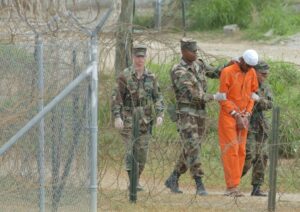
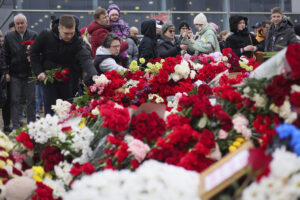

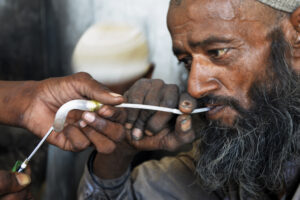
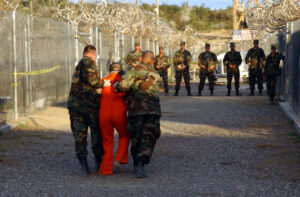
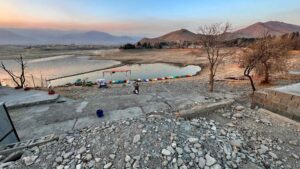
You need to be a supporter to comment.
There are currently no responses to this article.
Be the first to respond.